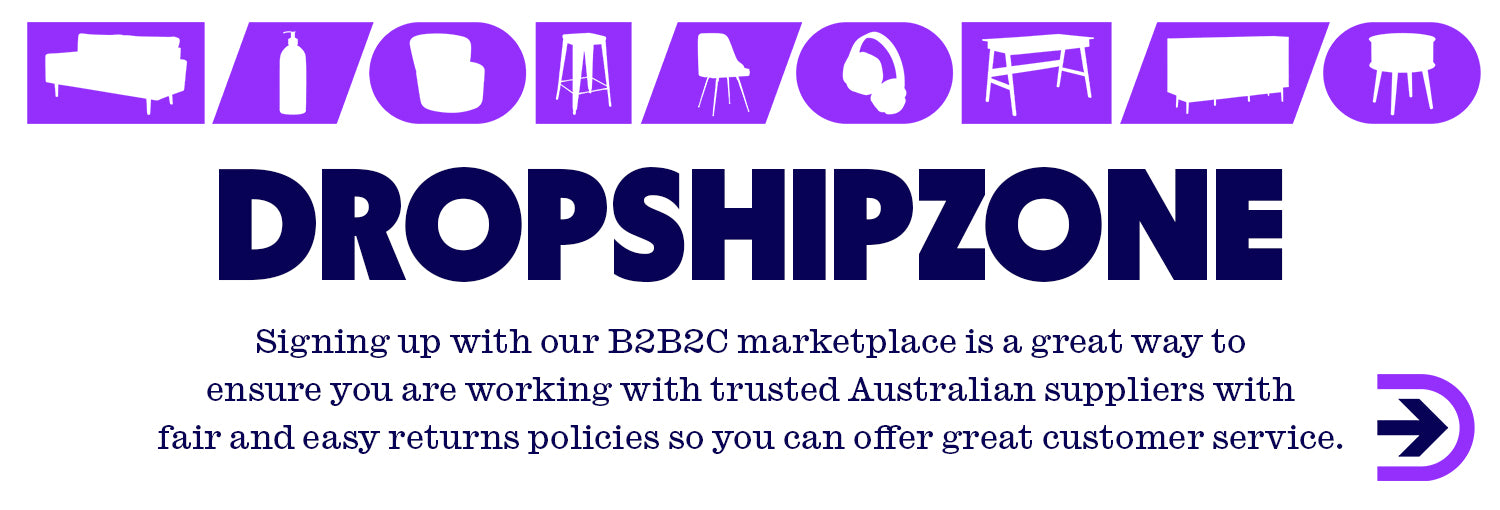
How to Deal with Returns as a Dropshipper
If you ask any entrepreneur the biggest pain point of running a business, you are likely to get the same answer: returns. Refunds, exchanges, and returns are all a standard part of any retail business and something to be expected. Even the most profitable businesses receive constant refund requests. The average refund return rate for ecommerce is around 20-30 per cent. That number will continue to grow as ecommerce expands since customers are more likely to return items online compared to brick-and-mortar. Returns are impossible to avoid entirely, but they don’t have to equal lost sales. If you handle your returns efficiently, they can be an opportunity for increased customer satisfaction and loyalty.

Should you accept returns as a dropshipper?
A return does not necessarily mean you’ve lost a sale. It could simply mean that the product didn’t work out for the customer this time. Returns and refunds result in revenue losses, and you may be tempted to remove the risk altogether. However, nothing will hurt your online business more than not accepting returns.
We understand the allure of not accepting returns as a dropshipper. Returns are a part of doing business and won’t go away if you ignore them. The return or exchange process isn’t the same for a dropshipping business as other ecommerce fulfilment methods. Customer orders are fulfilled on behalf of retailers by third-party suppliers. This means that if a customer requests a return or exchange, the product must be returned to the supplier.
Benefits of accepting returns
Returns can make or break a business. Managed poorly and customers won’t shop with you again. On the other hand, if returns are handled correctly, your online business will improve its reputation and you’ll see an increase in repeat orders. The good news is only 19 per cent of retailers have strategic return programs, meaning you could get ahead of the competition.
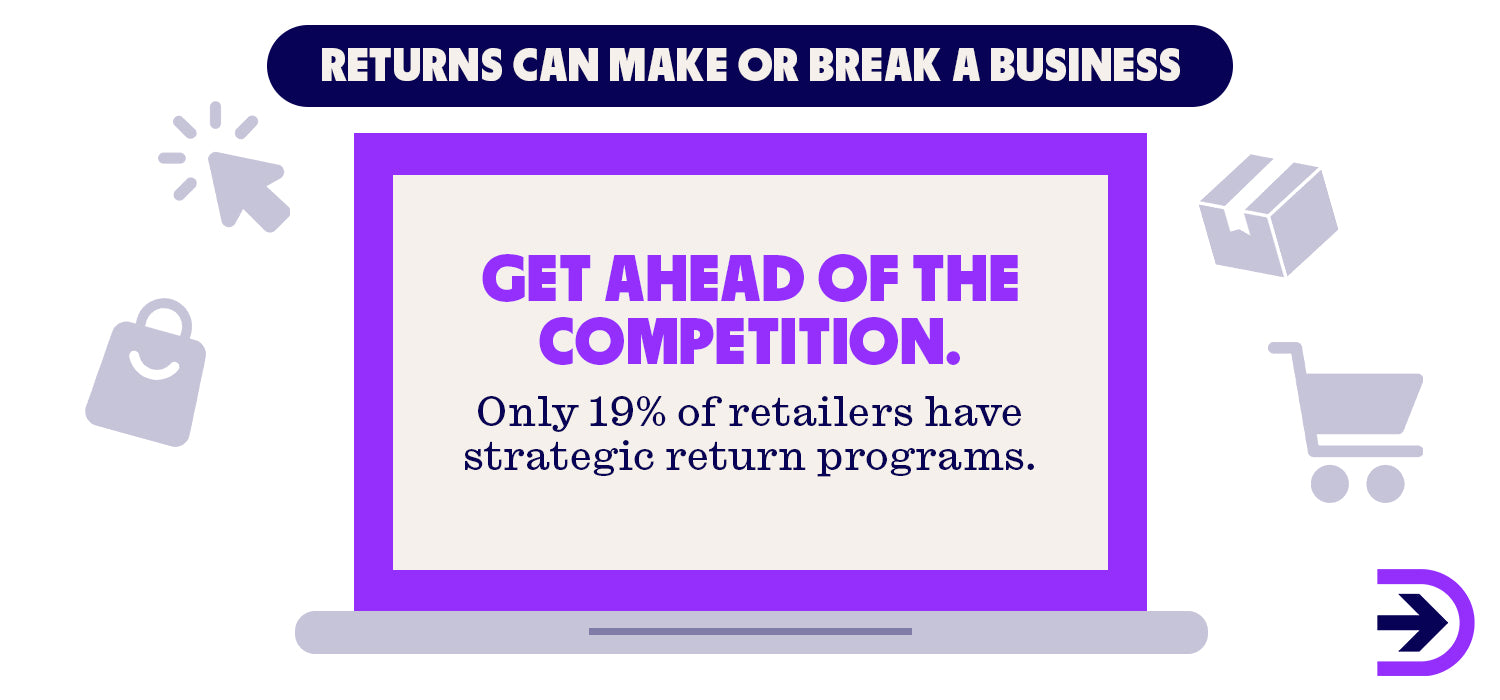
Improve sales
Returns can help improve overall sales profits when managed efficiently. 76 per cent of first-time consumers who enjoy an easy return experience say they will shop with that retailer again. Returns still result in lost sales, but in the long term, having a clear and well-written return policy will improve customer loyalty. You can even add customers to your mailing list when they return products. Email marketing is a great business strategy, and you may even be able to make additional sales through your marketing if shoppers have been happy with your returns policy.
A popular way to incentivise your returns process is by offering extra credit to customers for an exchange. Many stores will add an extra percentage to the retail price when a customer chooses to receive a store credit over a refund. This ensures customers are still purchasing from your store, which could even result in a higher transaction value.
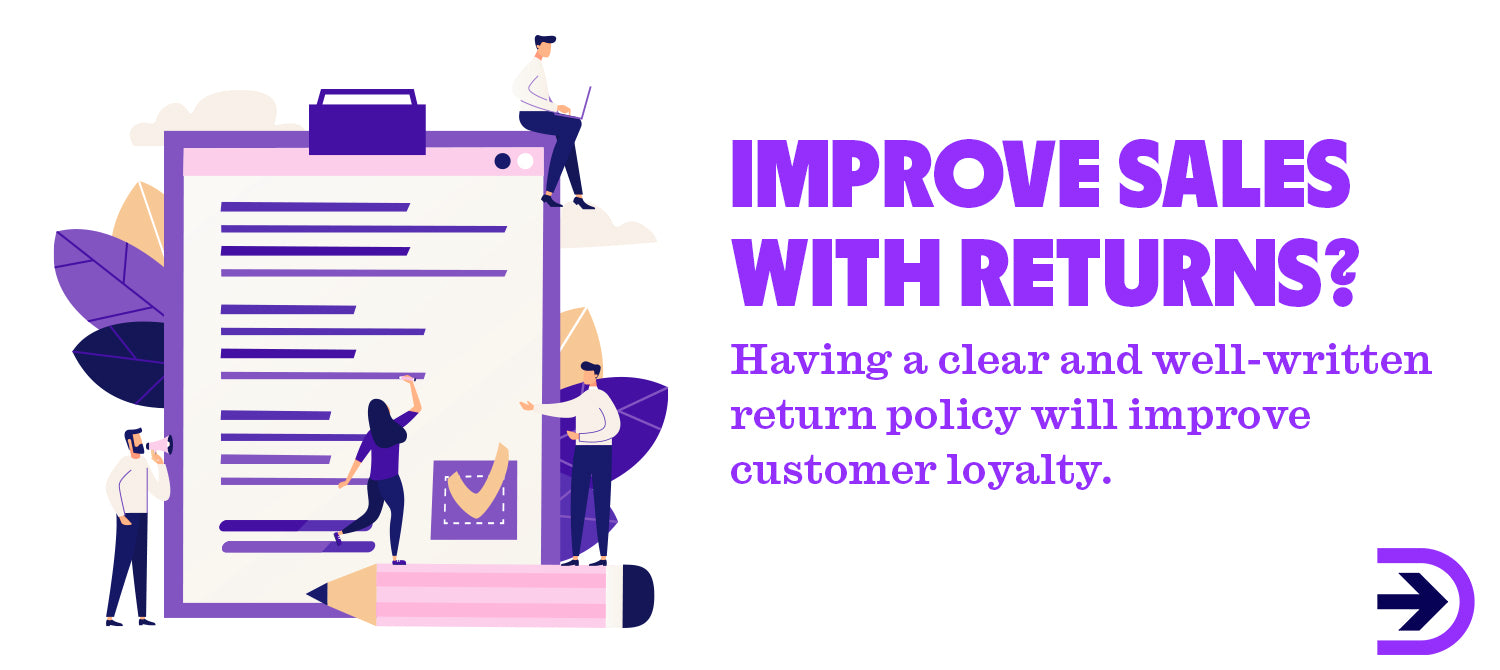
Improve brand trust
Customers feel confident shopping from a business with a great return and exchange policy. It gives them peace of mind knowing that they can request a return or exchange if they're unhappy with their purchase. A clear refund and exchange policy is seen by many as a guarantee that if they aren’t happy with the product, they will get their money back. This is a crucial selling point for customers and shows that the retailer has trust in the quality of their products.
Improve brand reputation
Word-of-mouth is a powerful thing. If a shopper has a bad experience with a brand, chances are their friends and family will hear about it and avoid shopping from your online store in future. On the other hand, if you have a great return policy, shoppers will spread positive things about your brand.
The importance of a returns policy for your dropshipping business
Research suggests that 74 per cent of customers read return policies before purchasing. If you don’t have one you run the risk of stopping the customer buying journey in its tracks. Customers will view an online business without a returns policy as unprofessional and untrustworthy. Additionally, a well-defined return policy can avoid unnecessary customer enquiries that will take valuable time out of your workflow.
A clear return policy is crucial to help set customer expectations. This way, retailers can reduce the risk of unhappy customers.
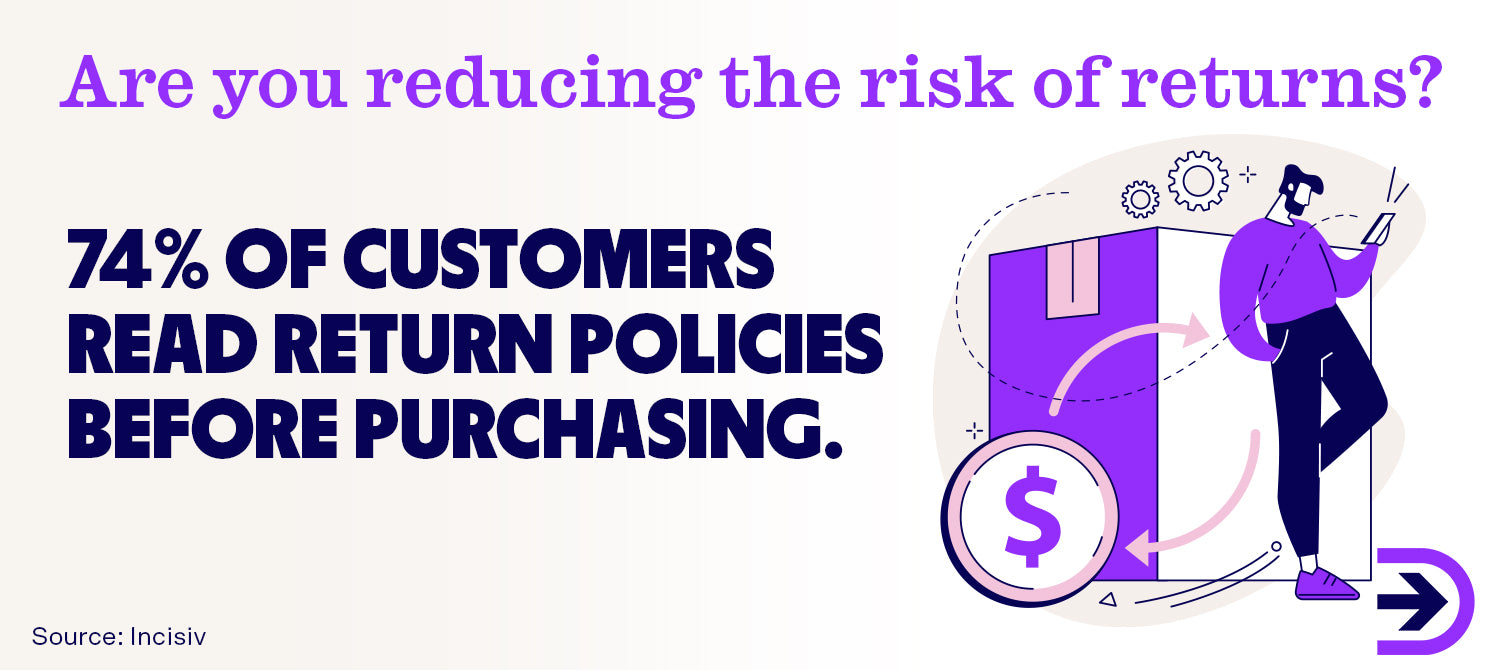
How to create a returns policy
You should provide a returns policy on multiple pages of your website, not just on the one designated page. If the policy is included by the retailer throughout the customer shopping journey, customers are less likely to be disappointed when they find they can’t return a particular item. It will help set customer expectations and avoid conflict. For example, you can display ‘Free Returns’ in the same place as ‘Free Shipping’ on product pages. A popular online store like The Iconic clearly states when items cannot be returned or exchanged during the checkout process. This gives customers a chance to either not go through with the purchase or run the risk of not being able to return it.
Clearly outline if any items are not included in your returns policy. Non-refundable items may include final sale, bathers, underwear, and earrings. Include return requirements including things like not worn, still in the original packaging, with tags on. You will also want to detail if certain countries are exempt and the period for which customers can exchange or return.
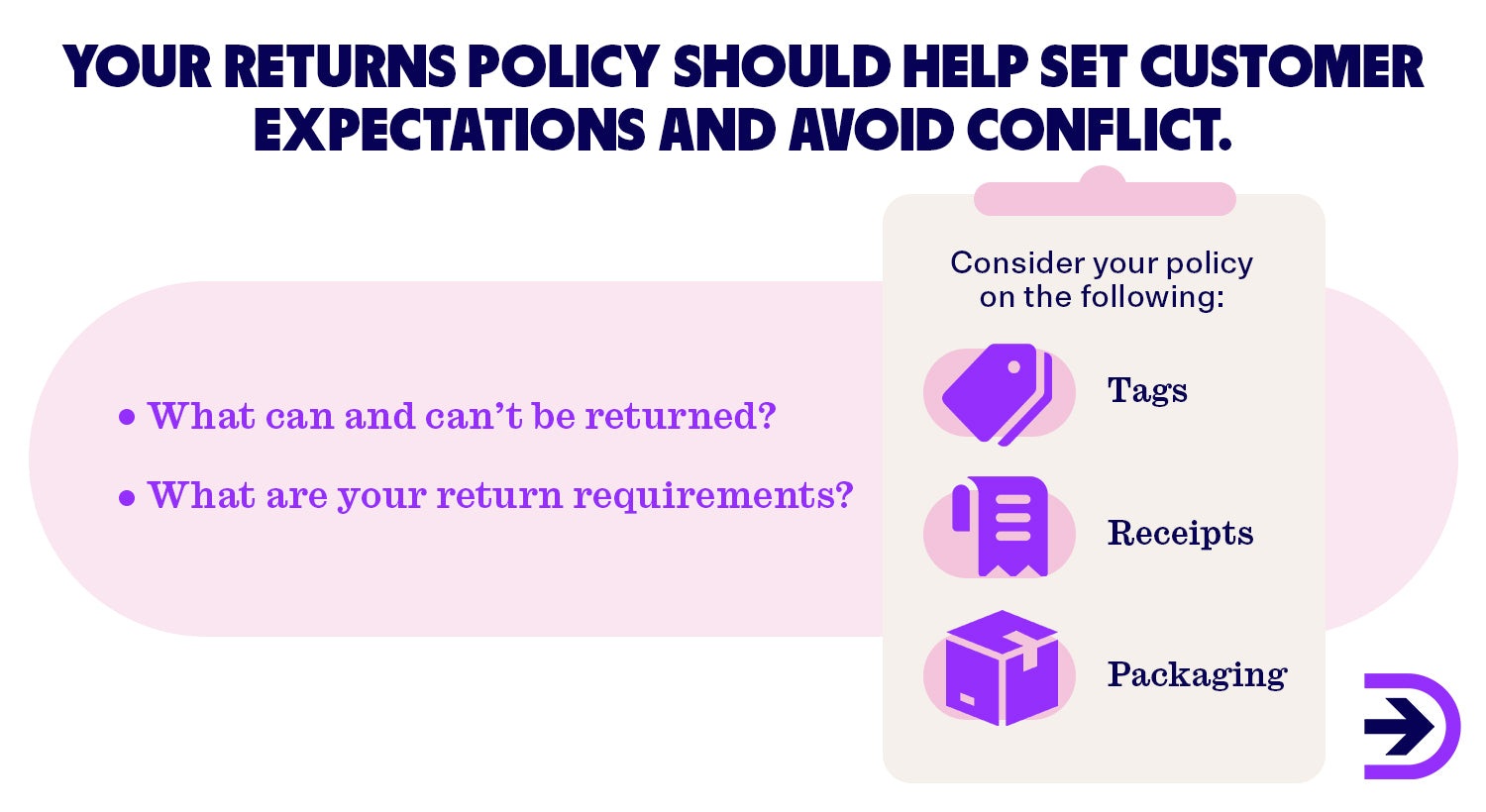
Dropshipping returns go directly through the supplier, so they will need to be consulted for this step. If you work with multiple suppliers, they may have different return policies. So you’ll want to design a return policy that applies to all your products, considering your supplier return policies. If one supplier has a generous return period of 60 days and another offers only 15 days, you’ll need to find somewhere in between. Because of the nature of dropshipping customers are unlikely to realise that there are different returns policies for some products, and they may get confused. Since most people head to a returns policy page to find relevant information, you should clearly outline the time frame here. If you must have different timeframes for different items, consider outlining this information clearly in your return policy.
Detail how a customer can submit a return. Do they have to email customer service or submit a return request? This should be as clear as possible to avoid confusion and provide relevant links for convenience. From there you should state how the money will be refunded to the customer. The majority of returns policies and FAQs can be found in the footer of a website. If you’ve already set up your online dropshipping store with Shopify, you can easily add a new page to your website dedicated to returns. Shopify has a free return policy generator that gives you a template you can change and update to suit your policy. This way, you don’t have to start from scratch.
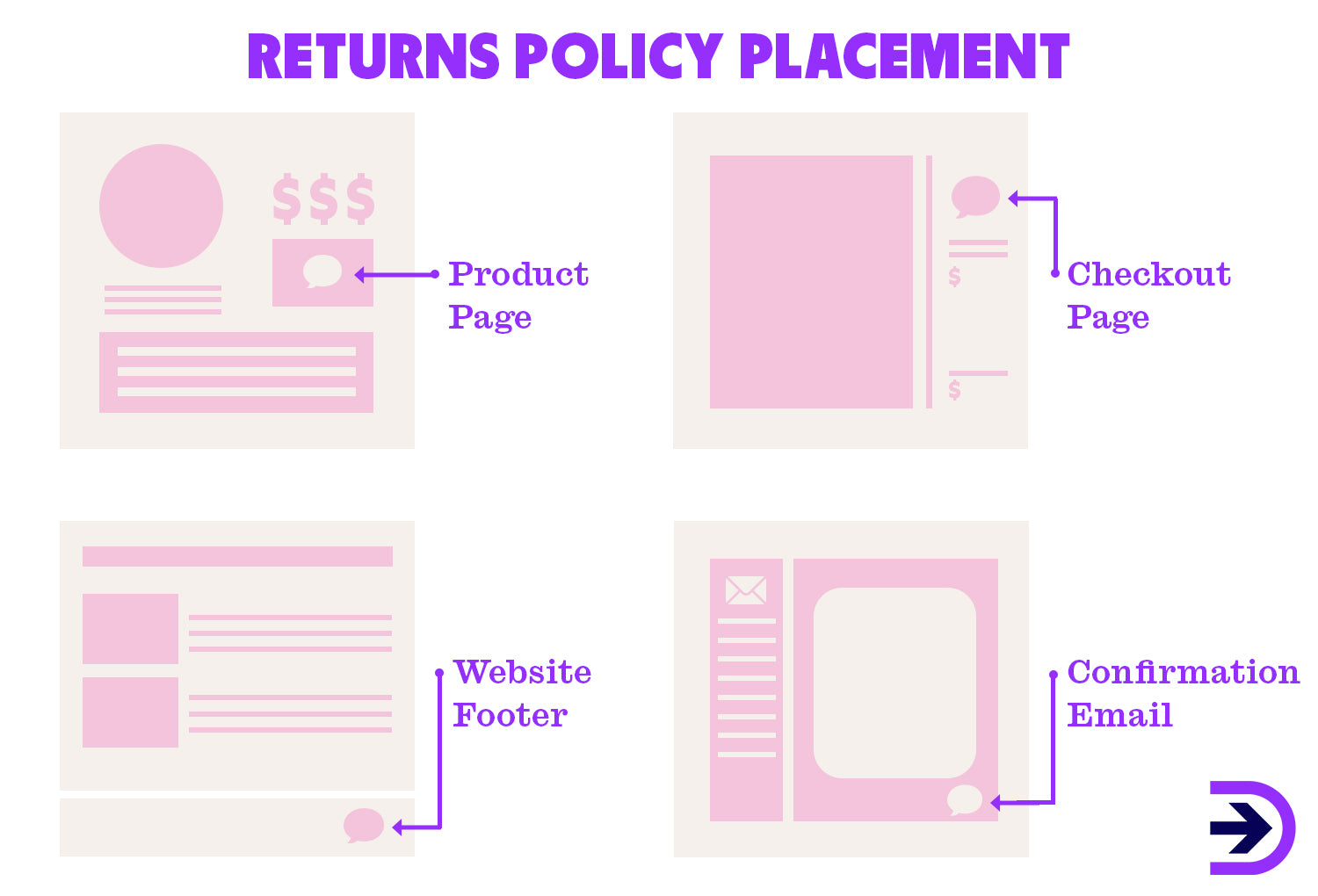
A returns policy should also include pricing including postage fees. Pre-paid return labels result in higher customer satisfaction. Shoppers will be more likely to make bigger purchases from your store if they can be assured there will be no extra cost to return items. Free returns also place you ahead of competitors as 50 per cent of shoppers are likely to choose a different retailer if they have to pay to return an item.
A step-by-step explainer for handling returns as a dropshipper
Step 1: Become acquainted with your supplier returns policies
Each dropshipping supplier will have a different returns policy, and depending on how many suppliers you work with, you should ensure you are aware of them all. Your suppliers may include return fees in their terms and conditions. This could include things like shipping costs or restocking fees. As a retailer, you get to set your retail price, meaning you can include these fees in your prices to ensure minimal losses in revenue.
The better your relationship with your suppliers, the more likely it is you’ll have a great understanding of their returns process. It will also be easier to start the returns process with your supplier as they should have a simple returns policy.
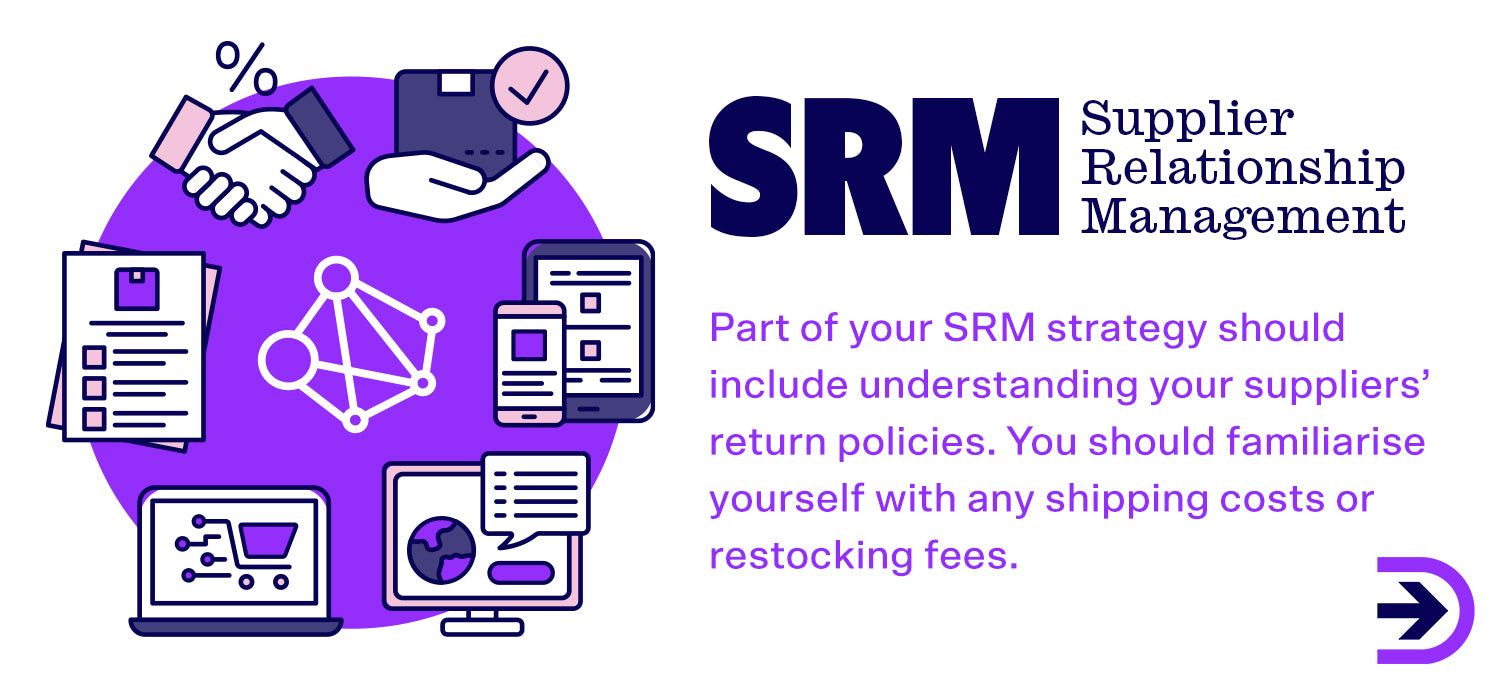
Step 2: Communicate the return request to your supplier ASAP
When it comes to the dropshipping fulfilment method, your supplier oversees all things inventory, and that means the returns process also includes them. The products came from your supplier, so it makes sense that they also go back to the supplier. They are likely to have a time limit on returns, so as soon as your customer submits a request you should make your supplier aware to avoid the cut-off.
It’s important you keep your supplier in the loop of the returns process, including what product is being returned, colour and size where applicable. If a product arrives at your supplier’s warehouse without their knowledge it could harm your supplier relationship.
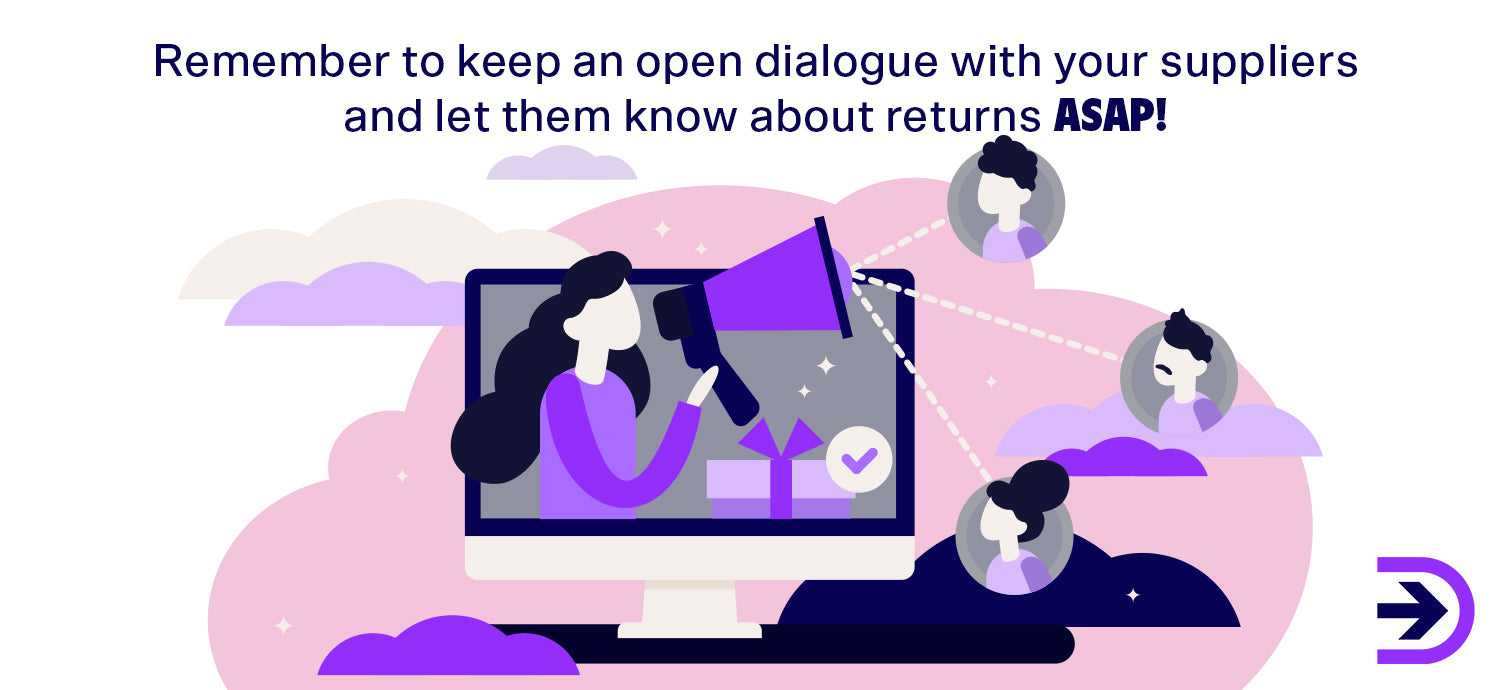
Step 3: Determine if the customer requires a refund or product replacement
This step of the returns process needs to be determined early on. If your customer requires a different size or product replacement, your supplier will need to be made aware so they can accommodate and you will need to provide your customer with the return address of your dropshipping supplier.
In some cases where the product is large and return shipping costs are expensive, you may consider doing a returnless refund. This is when the customer doesn’t have to ship the item back to receive a refund. They will instead keep the product and either get a replacement or do with the item what they please. This is suitable when the return shipping fees will end up exceeding the original purchase, meaning it isn’t worth it based on pricing. It’s also a great way to foster customer relationships, ensuring they are satisfied with their reimbursement while also removing the hassle of shipping the item back. These types of refunds don’t need to be publicly advertised as they can be decided on a case-by-case basis.
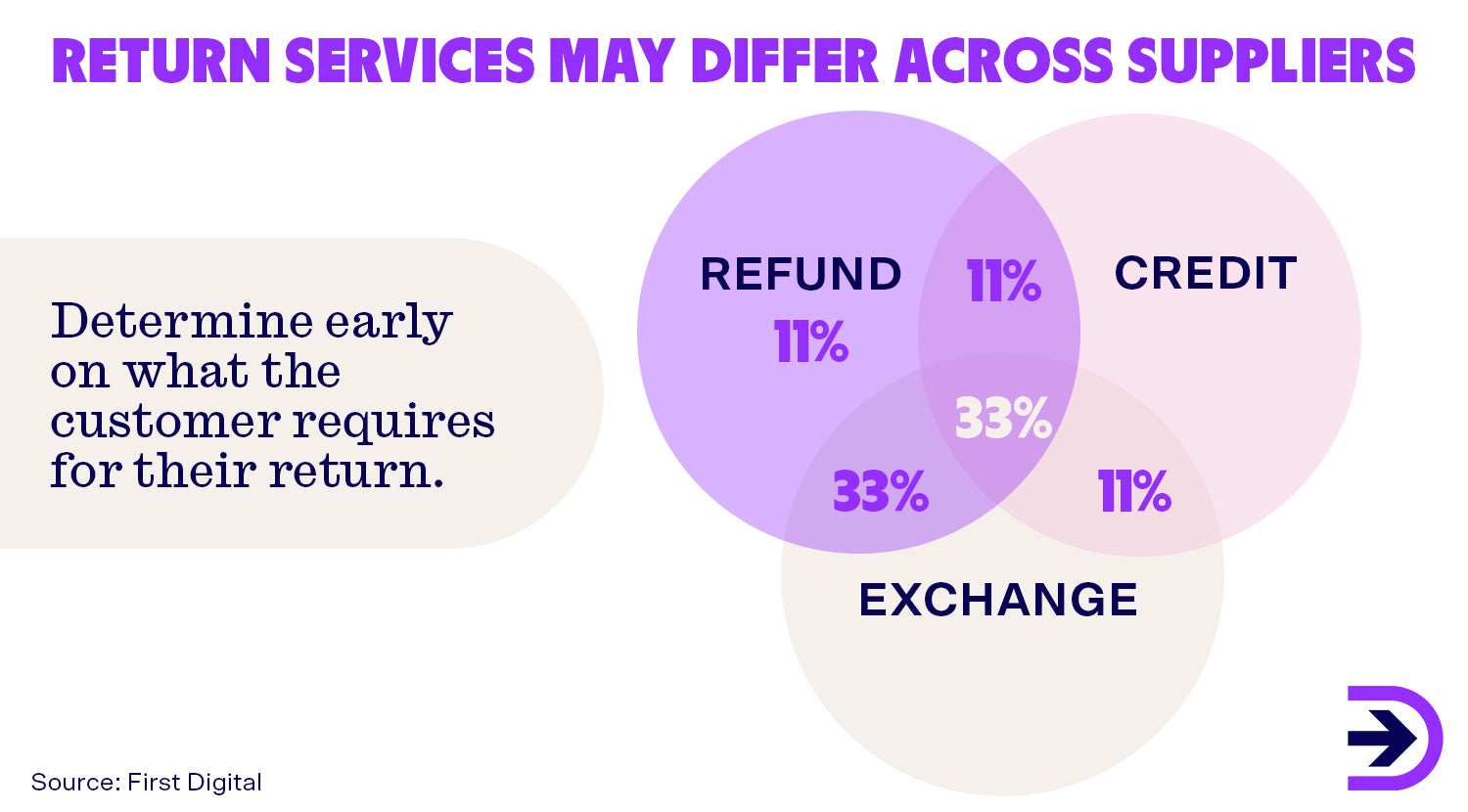
Step 4: Refund the customer the retail price of the returned product
Many stores provide a refund to customers only once they receive the returned product, and the same applies to the dropshipping business model. You’ll either get notified by your supplier that the product has been received or you’ll get a refund for the wholesale price of the product. From there, you can refund your customer the retail price. Make sure your customer is made aware of when they are likely to receive a refund. You can set up an automated email saying you’ve received their refund request and detail the next steps in the process. You can also set up tracking for the process to keep the customer updated. Once the product has arrived back to the supplier you can send another email stating how long the refund will take to get back into their account. This is a great way to keep customers happy with the return process and ensure they shop with you again.
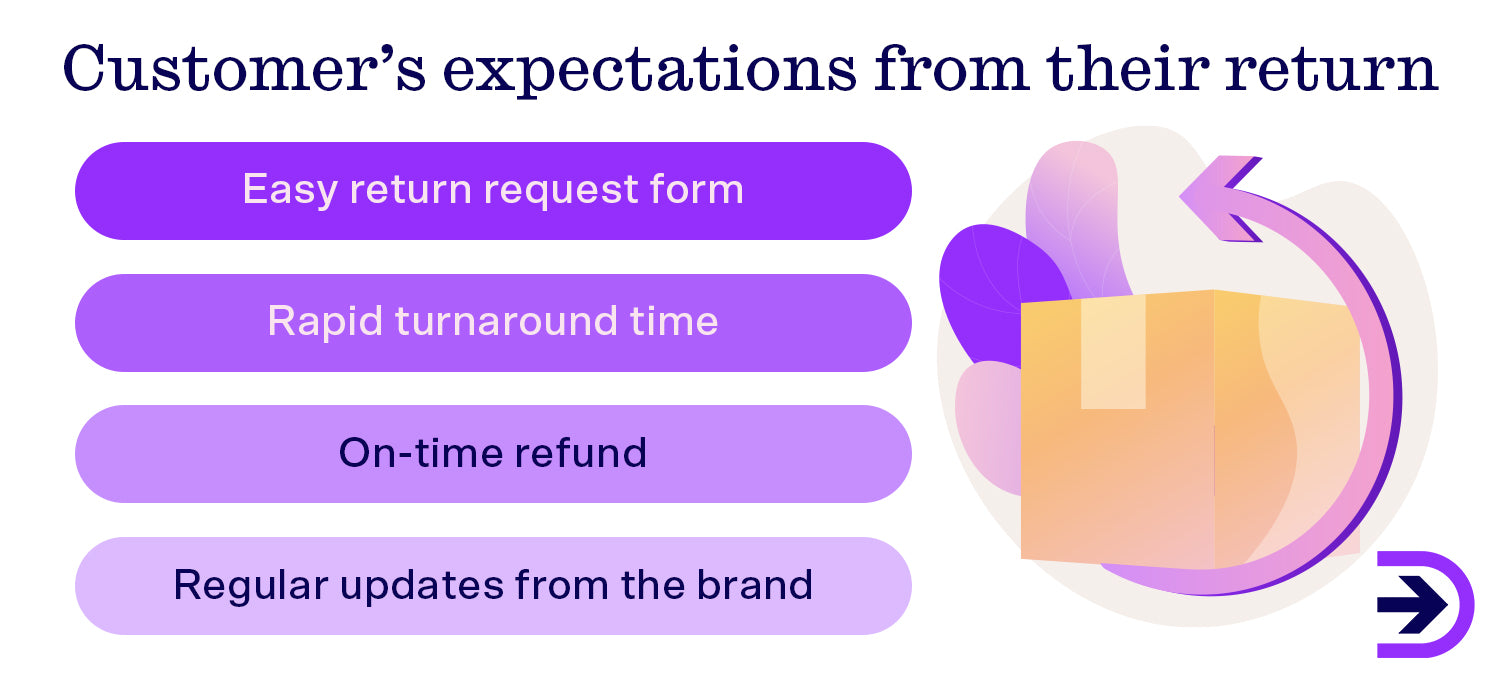
Step 5: Get feedback from customers to help avoid further customer complaints
When a customer initiates a return request, always remember to ask customers the reason for their return. Based on the feedback, you may be able to find an easy solution. If not, you’ll gather valuable information to improve your business. For example, consider you're selling a bed frame, and you get a return request from multiple customers for the same reason. You’ll know how to tackle the situation.
This type of feedback can also be used for market research that can be used to grow your ecommerce business. You’ll collect invaluable data from each return as customers have gone through the entire purchase journey. Based on the feedback you can better develop things like product quality and sizing, shipping prices and website usability.
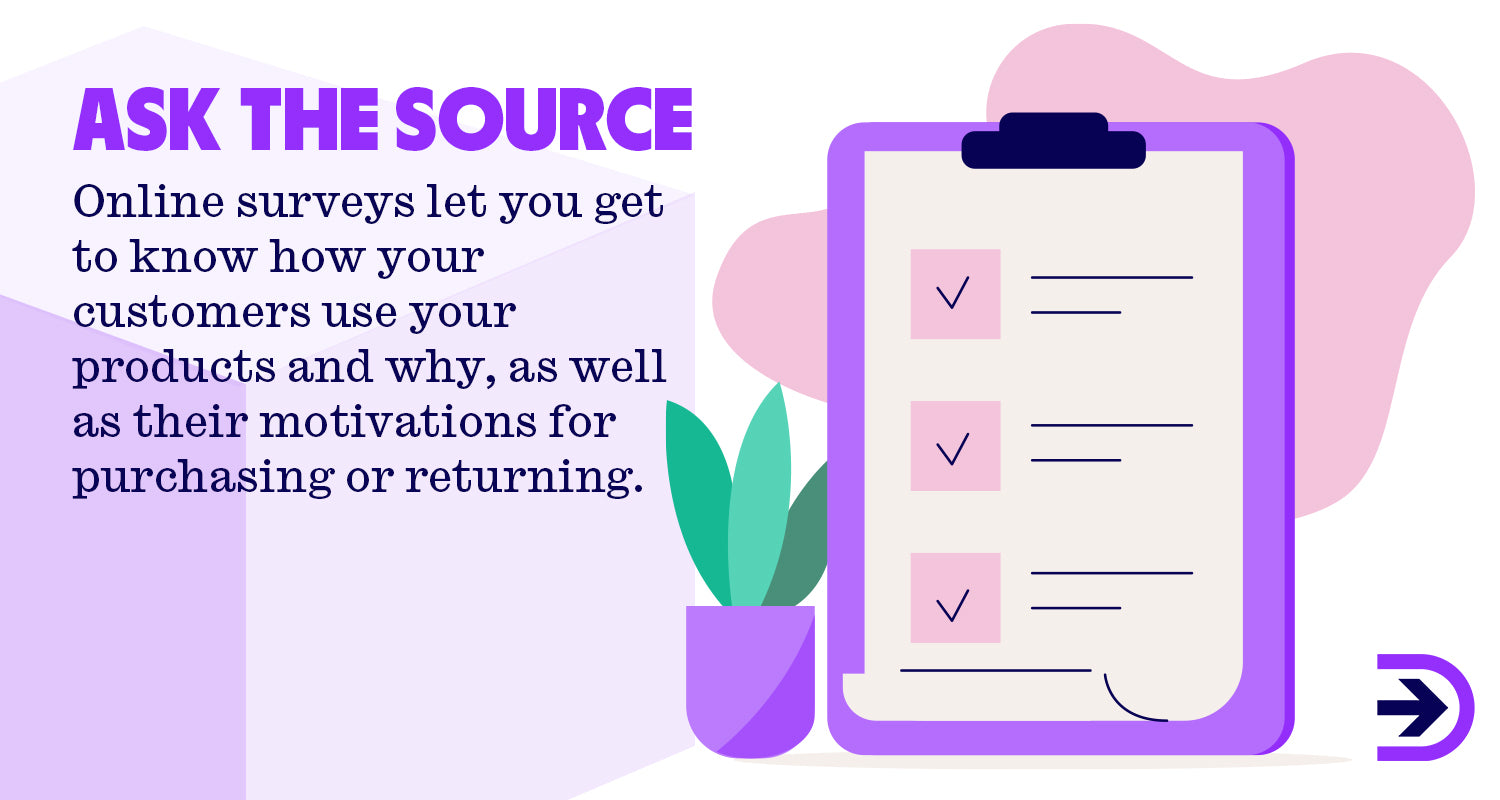
Other factors influencing returns
Returns are sometimes not as simple as just five steps. There may be times when a customer gets faulty products, and as we discussed, you may choose to let the customer keep the product based on shipping costs. Suppliers might have different restocking fees, and bulky items may be more expensive to ship. In another instance, a customer may have never received their item. In this case, you should investigate and offer a refund if you can’t resolve the matter.
Your suppliers may operate internationally, which could complicate the returns policy. With a marketplace like Dropshipzone, all our dropshipping suppliers operate from Australia, removing the risk of paying excessive restock fees and irritating your customers due to slow return times.
Tips to reduce returns
Retailers won’t be able to eliminate returns altogether, but there are a few ways to minimise their frequency. Providing customer reviews is a great way to improve sales. Customers are more likely to purchase a product with positive customer reviews. With the help of customer reviews, shoppers can understand if an item runs large or true to size or has a satisfactory assembly manual. You can also reduce returns by offering interactive shopping tools. For example, furniture brands can offer augmented reality capabilities so customers can see what a couch will look like in their homes. Sizing charts for clothing companies can also help reduce return rates, as 50 per cent of returns are due to incorrect sizing. Customers can use their own measurements to find the right size for them and be less likely to return.

Essentially, the more information you offer about your products, the less likely a customer will return them. You could provide your potential customers with product demo videos or detailed descriptions with accurate dimensions.
Returns made easy with Dropshipzone
Dropshipzone clearly states its return policy for all retailers for complete customer satisfaction. You can complete refunds through the Message Center where the support team will decide if a product has to be returned by the customer. Signing up with our B2B2C marketplace is a great way to ensure you are working with trusted Australian suppliers with fair and easy returns policies so you can offer great customer service.




